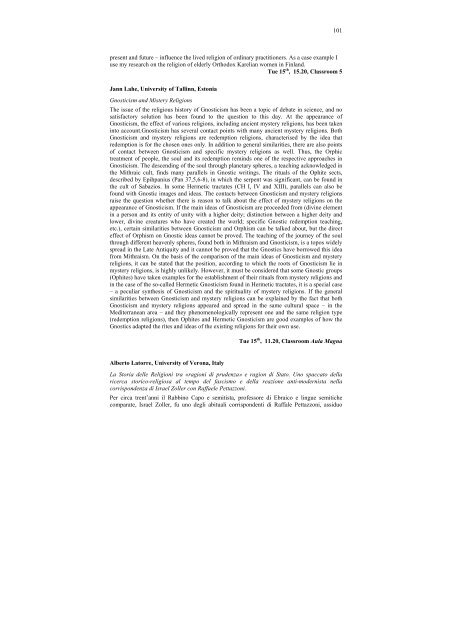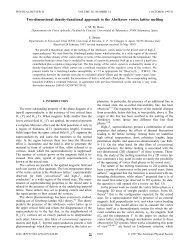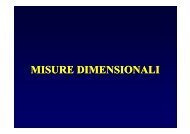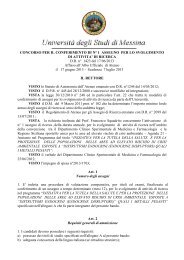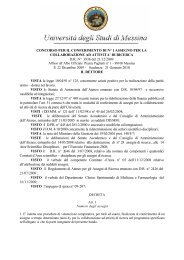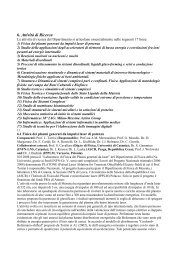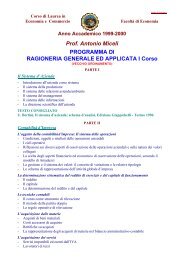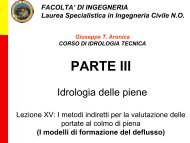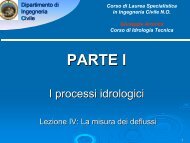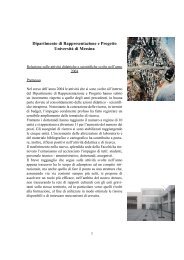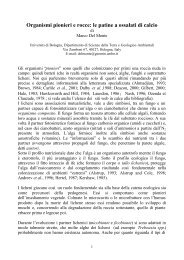PROGRAMME AND ABSTRACTS - Università degli Studi di Messina
PROGRAMME AND ABSTRACTS - Università degli Studi di Messina
PROGRAMME AND ABSTRACTS - Università degli Studi di Messina
You also want an ePaper? Increase the reach of your titles
YUMPU automatically turns print PDFs into web optimized ePapers that Google loves.
101<br />
present and future – influence the lived religion of or<strong>di</strong>nary practitioners. As a case example I<br />
use my research on the religion of elderly Orthodox Karelian women in Finland.<br />
Tue 15 th , 15.20, Classroom 5<br />
Jann Lahe, University of Tallinn, Estonia<br />
Gnosticism and Mistery Religions<br />
The issue of the religious history of Gnosticism has been a topic of debate in science, and no<br />
satisfactory solution has been found to the question to this day. At the appearance of<br />
Gnosticism, the effect of various religions, inclu<strong>di</strong>ng ancient mystery religions, has been taken<br />
into account.Gnosticism has several contact points with many ancient mystery religions. Both<br />
Gnosticism and mystery religions are redemption religions, characterised by the idea that<br />
redemption is for the chosen ones only. In ad<strong>di</strong>tion to general similarities, there are also points<br />
of contact between Gnosticism and specific mystery religions as well. Thus, the Orphic<br />
treatment of people, the soul and its redemption reminds one of the respective approaches in<br />
Gnosticism. The descen<strong>di</strong>ng of the soul through planetary spheres, a teaching acknowledged in<br />
the Mithraic cult, finds many parallels in Gnostic writings. The rituals of the Ophite sects,<br />
described by Epihpanius (Pan 37,5,6-8), in which the serpent was significant, can be found in<br />
the cult of Sabazios. In some Hermetic tractates (CH I, IV and XIII), parallels can also be<br />
found with Gnostic images and ideas. The contacts between Gnosticism and mystery religions<br />
raise the question whether there is reason to talk about the effect of mystery religions on the<br />
appearance of Gnosticism. If the main ideas of Gnosticism are proceeded from (<strong>di</strong>vine element<br />
in a person and its entity of unity with a higher deity; <strong>di</strong>stinction between a higher deity and<br />
lower, <strong>di</strong>vine creatures who have created the world; specific Gnostic redemption teaching,<br />
etc.), certain similarities between Gnosticism and Orphism can be talked about, but the <strong>di</strong>rect<br />
effect of Orphism on Gnostic ideas cannot be proved. The teaching of the journey of the soul<br />
through <strong>di</strong>fferent heavenly spheres, found both in Mithraism and Gnosticism, is a topos widely<br />
spread in the Late Antiquity and it cannot be proved that the Gnostics have borrowed this idea<br />
from Mithraism. On the basis of the comparison of the main ideas of Gnosticism and mystery<br />
religions, it can be stated that the position, accor<strong>di</strong>ng to which the roots of Gnosticism lie in<br />
mystery religions, is highly unlikely. However, it must be considered that some Gnostic groups<br />
(Ophites) have taken examples for the establishment of their rituals from mystery religions and<br />
in the case of the so-called Hermetic Gnosticism found in Hermetic tractates, it is a special case<br />
– a peculiar synthesis of Gnosticism and the spirituality of mystery religions. If the general<br />
similarities between Gnosticism and mystery religions can be explained by the fact that both<br />
Gnosticism and mystery religions appeared and spread in the same cultural space – in the<br />
Me<strong>di</strong>terranean area – and they phenomenologically represent one and the same religion type<br />
(redemption religions), then Ophites and Hermetic Gnosticism are good examples of how the<br />
Gnostics adapted the rites and ideas of the existing religions for their own use.<br />
Alberto Latorre, University of Verona, Italy<br />
Tue 15 th , 11.20, Classroom Aula Magna<br />
La Storia delle Religioni tra «ragioni <strong>di</strong> prudenza» e ragion <strong>di</strong> Stato. Uno spaccato della<br />
ricerca storico-religiosa al tempo del fascismo e della reazione anti-modernista nella<br />
corrispondenza <strong>di</strong> Israel Zoller con Raffaele Pettazzoni.<br />
Per circa trent’anni il Rabbino Capo e semitista, professore <strong>di</strong> Ebraico e lingue semitiche<br />
comparate, Israel Zoller, fu uno <strong>degli</strong> abituali corrispondenti <strong>di</strong> Raffale Pettazzoni, assiduo


